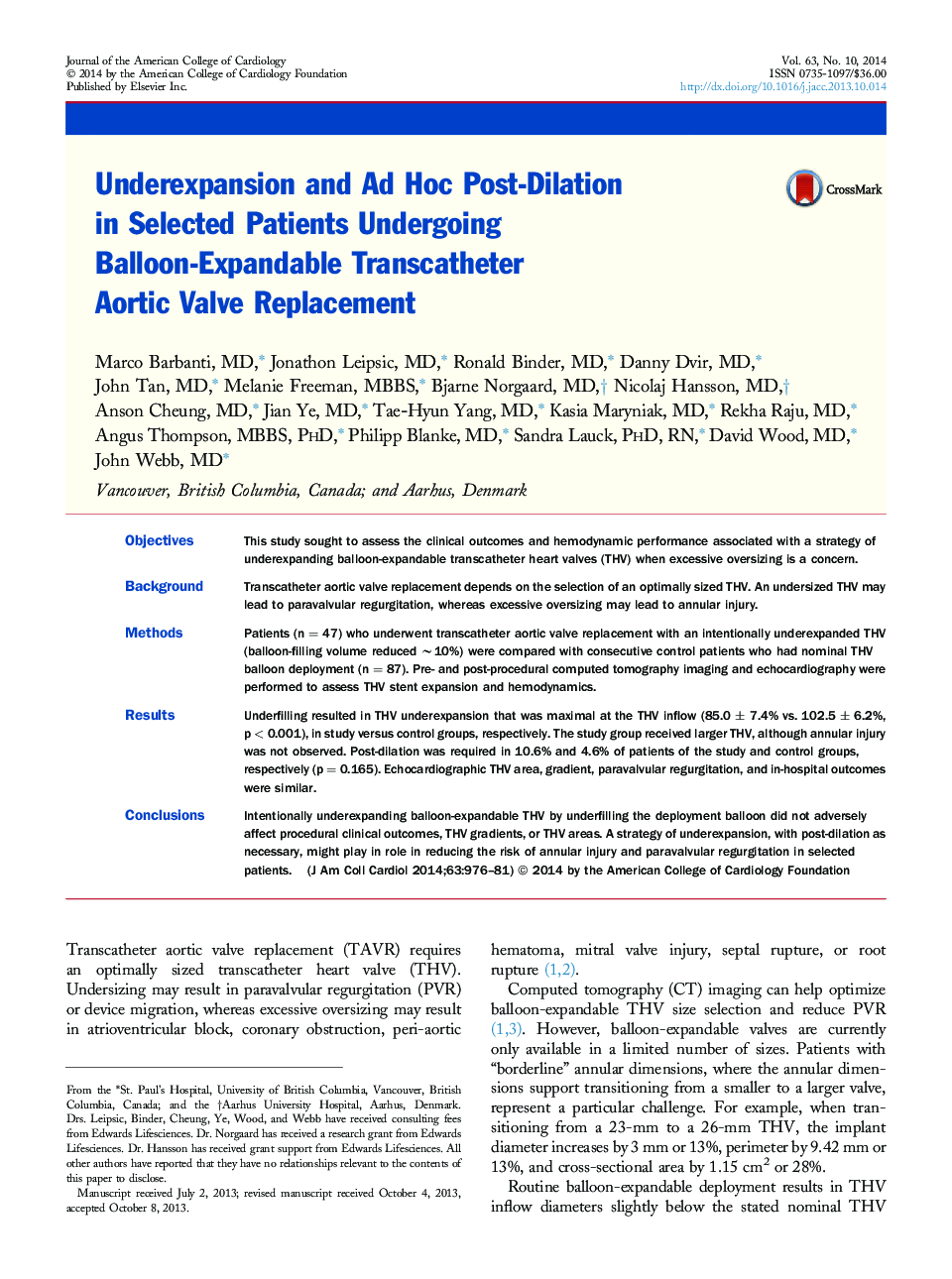| Article ID | Journal | Published Year | Pages | File Type |
|---|---|---|---|---|
| 2945433 | Journal of the American College of Cardiology | 2014 | 6 Pages |
ObjectivesThis study sought to assess the clinical outcomes and hemodynamic performance associated with a strategy of underexpanding balloon-expandable transcatheter heart valves (THV) when excessive oversizing is a concern.BackgroundTranscatheter aortic valve replacement depends on the selection of an optimally sized THV. An undersized THV may lead to paravalvular regurgitation, whereas excessive oversizing may lead to annular injury.MethodsPatients (n = 47) who underwent transcatheter aortic valve replacement with an intentionally underexpanded THV (balloon-filling volume reduced ∼10%) were compared with consecutive control patients who had nominal THV balloon deployment (n = 87). Pre- and post-procedural computed tomography imaging and echocardiography were performed to assess THV stent expansion and hemodynamics.ResultsUnderfilling resulted in THV underexpansion that was maximal at the THV inflow (85.0 ± 7.4% vs. 102.5 ± 6.2%, p < 0.001), in study versus control groups, respectively. The study group received larger THV, although annular injury was not observed. Post-dilation was required in 10.6% and 4.6% of patients of the study and control groups, respectively (p = 0.165). Echocardiographic THV area, gradient, paravalvular regurgitation, and in-hospital outcomes were similar.ConclusionsIntentionally underexpanding balloon-expandable THV by underfilling the deployment balloon did not adversely affect procedural clinical outcomes, THV gradients, or THV areas. A strategy of underexpansion, with post-dilation as necessary, might play in role in reducing the risk of annular injury and paravalvular regurgitation in selected patients.
